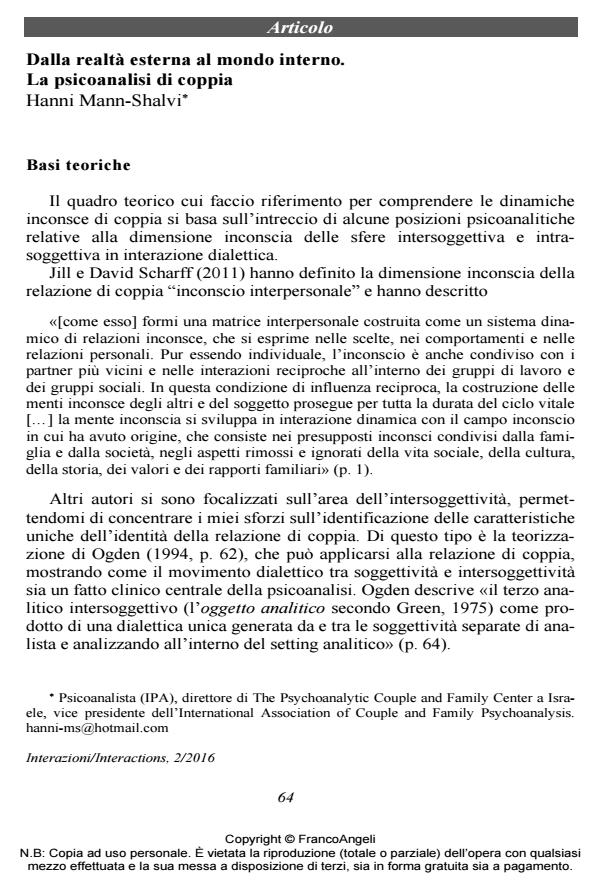To fulfill from within what was built from around. Couple Psychoanalysis
Journal title INTERAZIONI
Author/s Hanni Mann-Shalvi
Publishing Year 2016 Issue 2016/2
Language Italian Pages 12 P. 64-75 File size 186 KB
DOI 10.3280/INT2016-002007
DOI is like a bar code for intellectual property: to have more infomation
click here
Below, you can see the article first page
If you want to buy this article in PDF format, you can do it, following the instructions to buy download credits

FrancoAngeli is member of Publishers International Linking Association, Inc (PILA), a not-for-profit association which run the CrossRef service enabling links to and from online scholarly content.
Couple psychoanalysis’s theory and technique is presented in the paper based on the understanding of the link as a third, who takes on the attributes of an independent entity and is created by the intricate interaction between the entangled unconscious emotional dynamics of both spouses. Clinical material demonstrates how the spouses and their link, are subsystems that work together to form the couple as a single unit. Because each of the three has its own identity and emotional structure, in order to allow growth within the couple’s realm, all must undergo significant therapeutic emotional processes, which needs to be done simultaneously and moderately. Bridging constantly between the internal reality and its expression in the external reality.
Keywords: Couple-psychoanalysis, link, transgenerational transmission of trauma, interpersonal unconscious, third
Hanni Mann-Shalvi, Dalla realtà esterna al mondo interno. La psicoanalisi di coppia in "INTERAZIONI" 2/2016, pp 64-75, DOI: 10.3280/INT2016-002007